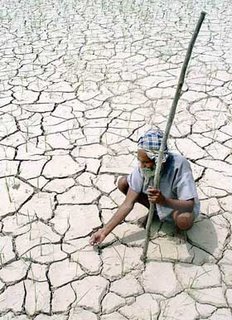The recently concluded meeting of Empowered Committee of State Finance Ministers on Goods and Services Tax perhaps could only manage to agree to disagree on the major arguments of the State Finance Ministers, derailing yet again any consensus on the Constitution (115th Amendment) Bill 2011, better known as the GST Bill.
The major arguments, besides compensation on the loss of revenues of the States, which though have been budgeted under the central pool but ambiguous on the disbursement, were on the inclusion of certain commodities and the impediment formation of a federal outreach of the Bill and its impact on State revenues. The rise of regional affirmation politically also has had its bearing, led more by the trust deficit on Central policies than on the fiscal autonomy which are a must to tide over the much-needed tax harmonisation, adding to the core of desired financial reforms.
The ‘tax on tax’ regime which was curtailed by the implementation of simplified Value Added Tax in 2005, and which allowed for a credit for tax paid on inputs, stemmed the impact marginally. However, it continued to be plagued by the existence of multiple rates of taxes and State-led exemptions depending upon whether the State is production-based or consumption- based across the basket of product and service categories.
The major taxes, several of which still remain outside the purview of VAT, have a multiplicity of differences between the States, leading to an unbalanced trade gap. Despite the task force on GST of the 13th Finance Commission working out a revenue-neutral rate of 12 per cent (five per cent CGST and seven per cent SGST), assuming there was a single GST rate for tax to be at a uniform percentage for the final product regardless of the supply chain arrangements for both manufacturing and distribution, the intent to implement is a precursor contingent upon the States to continue to be incentivised and reimbursed on their loss in revenues.
With no further pensive direction on any option or recourse to be aligned on the borrowing limits as percentage of Gross State Domestic Product of the States, decided by the Union Government, together with tax to be levied, the slugfest continues.
This defeats any cogent argument which is essential to address these concerns. It’s no wonder that there has been no alignment contrary to the recommendations by the commission, including suggesting models of European Union, Canada and Australia on the duality of the taxation incidences framework which draws on exhaustive references on the treatment, inclusions, exclusions and for other major source of revenues for the States. Besides other earning categories for States, petroleum products and alcohols, which between them contribute to upwards of Rs 2,00,000 crore of the States’ revenues ,fiscal strengths have been a perpetual bone of contention.
The growing fiscal deficit and consumer price inflation, which touched 11.24 per cent recently, have implied that the essential commodities, agri-produce and finished consumer products are continuing to face severe pressures squarely on account of the supply chain costs. Deregulated fuel prices across States, impacting the overall operating margins, have led to a continuous struggle by entities to tweak either end of the spectrum to remain efficient and profitable.
These latent incidences together with volatility and unsynchronised taxes, are laid sequestered within the rising supply chain costs and collected at the final point of consumption — with the overall burden being shouldered by the consumer. A recent business survey underlined these factors where, besides policy reforms with increased penetration of capital infusions in form of direct investments (26 per cent), infrastructure support to boost economic growth with a targeted GDP growth of six per cent (19 per cent), supply chain concerns were cited as high as 18 per cent by the respondents in terms of challenges to conduct businesses in India.
The resultant impact is a perpetual shift of aligning a network configuration and distribution channels which are continually been in the war rooms of executives grappling with uncertainty, owing not only to the indirect taxes but lacunae in deployed infrastructure and volatility of deregulated fuel prices. These are presently creating a chasm in the rates of taxes and policies, which differ from State to State.
This invariability has built up costs into inflation, which is now breaching the turf of credit and economic policies and impacting inter-State trades and the Union’s capital pool deficit. Further focus is needed on a review of the existing constitutional arrangements, which may well require a substantial realignment. The dual GST framework requires affording both the Centre and the States to have concurrent indirect taxation powers, subject to prohibition on extra-territorial taxation, playing fiddle to the alternatives in the form of acceptability and resistant intent by the States.
Fiscal prudence, perhaps, should begin from addressing the basics of controlling the distribution cost as a premise to afford a strong foundation for reforms. Subsuming through the layers, a simple structure will boost investments, eliminate disparity in taxation of goods and services and lead to an efficient tax compliance network. Additionally, it will bring down the resultant impact of logistics cost as a percentage of the GDP, which remains much higher at 12 per cent — both direct and lateral, as hidden expenses, for India in comparison to developing economies.
The GST regime is the single most-needed reform which can perhaps achieve the desired results. It can come about with one stroke of policy formulation. Strong political will can put the GST in place and secure a ‘harmonised’ consensus for its implementation. Who takes this up, will be decided after the Lok Sabha election in 2014.
(Author is New Delhi based Policy Analyst)
